Ndovu Team Ithumba Update: 01 September 2009
De – Snaring Report for September 09
Participants:
Patrick Mutuku Musau Kitulya Lemanten Labarakwe James Lodungokiyok Noah Lesimirdana
Area of operation:
During the month of September the Ithumba team patrolled the Community areas surrounding the National Park.
Observable Evidence
The drought is taking a hefty toll on wildlife on the country. Most Rivers have dried up and wildlife that remains is forced to remain close to scarce water sources. Many of this years young have been lost to the effects of the drought and the remaining game faces harassment from people who invade the parks for grass cutting and whatever water sources are remaining. Rangers found 25 dead elephants down the Galana River who died while trying to dig for water along a dry river bed and got their tusks stuck in the mud.
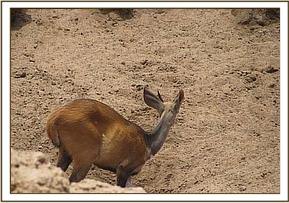
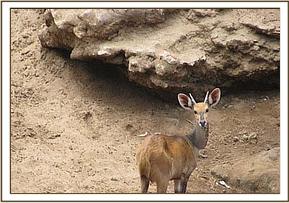
Findings
The Ithumba Team carried out Patrols on the outskirts of the National Park. The Ithumba area has a concentration of Elephants who are reliant on water from the Sheldrick Ithumba Stockades. The elephants have figured out that it is safer & easier to get their water from the Stockades as opposed to walking all the way to Tiva River which is not only a long distance but also a danger due to high levels of poaching activity along the River. We suspect elephant poachers are targeting elephants that congregate near the River and have set up shooting platforms along the River. With the ongoing drought this increase in water output is taking a toll on the Trusts borehole which is gradually becoming very low. The Trust is currently having to make long journeys in order to bring water to Ithumba. The drought has a devastating effect on wildlife in Kenya. The team found a young dead elephant calf near the Tiva River that died of dehydration, with wildlife currently having to walk long distances in search of water many of this year’s offspring have died due to this hardship.
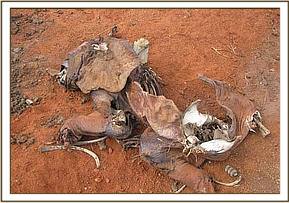
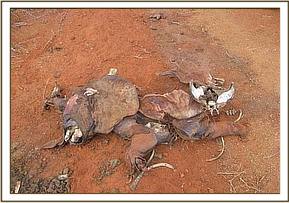
Tundani, Kazinko, and Mathae areas
During Patrols at Tundani a dead Buffalo was found, cause of death is uncertain however it is very likely a poaching victim due to the notorious reputation for poaching activity in this area.
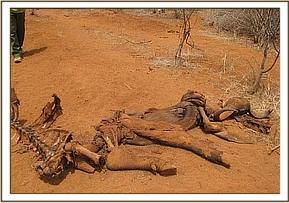
Wamata and Macho-Kobo areas
During patrols an Impala with an arrow in its head was seen. The Team attempted to to remove the arrow but sadly the impala got away and disappeared into thick bush.
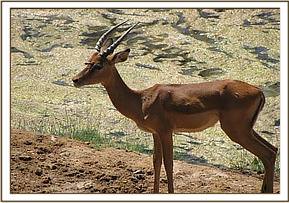
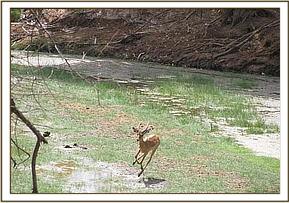
Umbi and Lagga-Kugu area
Patrols at Umbi area found slot of poachers tracks along the road to the Umbi airstrip. Illegal activities here are rampant and many of the bicycle tracks seen where of illegal charcoal and wood being transported into the Market. This area has a high concentration of Mellia Vonkensii which is a highly sought after type of timber which is normally only found deep inside the National Park. Poaching activities in the area seems to have calmed down for the time being. This area was previously a hotspot for poaching.
COMMUNITY OUTREACH PROGRAMME
At the start of the month the Ithumba Team received a brand new Cinema Unit with a mobile inverter power Unit. This new unit is of great help and has many advantages one of which is not needing to carry a generator and fuel around. This allows the Team to combine both desnaring and video shows especially at Gazi community which is very far from our base camp.
The team showed 7 video shows during the month in the Primary Schools around Tsavo North Boundary. The Children love to see the conservation videos which we are able to show to them either in their own tribal language, Kiswahili, or in English depending on the age group. The requests from the schools have been overwhelming and the team is grateful to the timely arrival of the new cinema unit. The Video shows normally last about 2 hours, from 3:10pm when classes end until 5:30pm. The pupils and teachers get very excited and are very appreciative. Even the parents enjoy coming along which is of great positive affect for us to build a good relationship with the local communities but also educates those that are doing the poaching of the negative effects of their activities. The team has over time seen a dramatic improvement in these communities in their attitude towards poaching and other illegal activities and the Mobile Cinema Unit contributes significantly to this change.
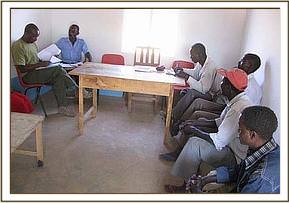
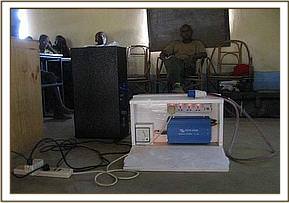
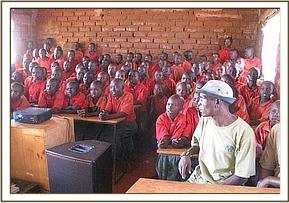
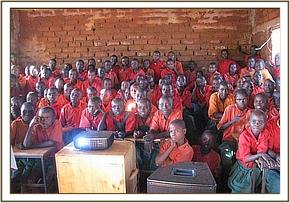
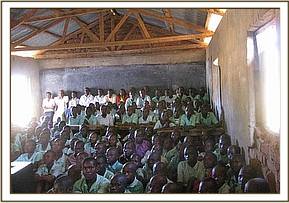
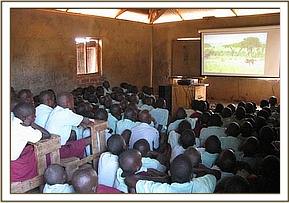
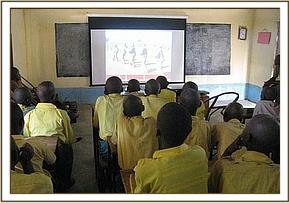
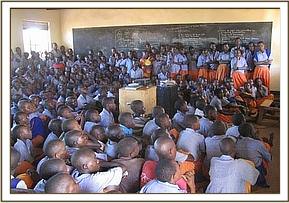
The Team intends to construct a questionnaire in order to evaluate & monitor the impact of the film shows to the community. We intend to show this change in a more formal way. REPORT COMPILED BY PATRICK MUTUKU